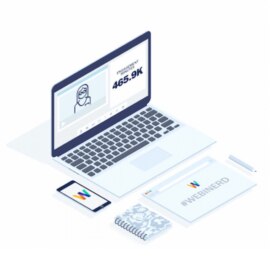How to Streamline Webinars Ops with Integrations

This post was originally published on heinzmarketing.com. Syndicated with permission.
Last week, we debuted a new blog series: The Road to Webinar Success designed to help you better plan, think about, and utilize webinars in your broader demand generation initiatives. Our first installment covered a brief background on the value of webinars as well as their effectiveness, and also dug into The Power of Panel Webinars. If you haven’t yet, go back and read that blog to get yourself oriented.
This week, I want to look at what it means to streamline your webinar operations using integrated tools and technologies. What are the values of integration? Who are the key stakeholders involved? What do you need to consider when it comes to integration? That’s what we’re here to find out.
An overview on streamlining webinar operations with integrated technologies
While the functionality of an individual tool matters, at some point, you’re going to need it to start sharing information. With robust integration between your webinar platform and the rest of your marketing tech stack, you can streamline operations across your sales and marketing initiatives.
Why should you care about streamlining webinar operations with integration?
To act on buying signals
Today, marketing is all about identifying signals and acting on them, and while we’re in no short supply of tools to identify what people do, when, and where, siloed tools makes acting on those signals much more difficult.
To react more intelligently
When your data is effectively integrated, you can identify prospect actions across your tech stack and better understand how best to follow-up on that action, without the manual data pulls. If a lead attends a webinar, sales can be notified to follow-up. If a lead registers but doesn’t attend a webinar, they can be added to a specific nurture program. If a lead asks a question on a webinar, an SDR can answer immediately. With the right integration, you are able to continue the conversation rather than reaching out cold.
To reduce manual workflows
Automation allows you to reduce the amount of manual processes to get the data you want before, during, and after a webinar. It also makes possible to develop programs or see new angles to data that were previously too difficult or too risky to do manually.
The ability to integrate helps mitigate risks with tricky data, and it allows you to focus your time on more important facets of your role, rather than spending hours sifting through data trying to decipher what’s actually relevant.
To share data across sales and marketing
When your webinars are integrated, sales and marketing can be better aligned when it comes time to engage a lead. With your webinar data being shared across systems, both teams know how leads have engaged in your webinars and can more thoughtfully route them accordingly as part of continued nurture.
When it comes to integrations, anything that speeds up the sales and marketing process is beneficial. Anything that delays it is a problem.
To improve data and reporting capabilities
Gain a single source of truth not just for your webinar data, but also the role it plays amongst your broader sales and marketing activities. With this, you can simplify reporting and analytics and ensure that marketing, sales, and executive leadership are all looking at the same data to see reports with the same lens.
With integration, you are also able to build a process around how data is collected and acted on, getting the right data in front of the right people at the right time.
The more you can do to automate your workflows with inputs from integrations, the more you can do to drive the business forward.
When should you consider streamlining webinar operations with integration?
You should never not think about the possibility of integration.
The minute you have two systems, you should ask if they’re able to talk with each other. Consider using this play when you want your webinar program to play a larger role in your marketing strategy, you’re tired of manually sifting through webinar data, or your marketing, sales, and executive teams all lack a central data source.
You may also want more transparency and reliability in your data and reporting. Maybe you want tighter alignment between sales and marketing before, during, and after a webinar happens. Or perhaps you want to improve your lead conversion rates, follow-up actions, and broader lead engagement tactics.
Who are the key stakeholders involved in streamlining webinar operations with integration?
When it comes to integration, your marketing operations team should lead the charge. However, they should be sure to work with both sales and marketing to identify what tools need to be integrated, what inputs need to be involved, and what signals need to be tracked.
Want more?
Now that you know the principles of streamlining your webinar operations, it’s time to put it all together. To learn how to do this and much, much more, join us at ON24’s Webinar World 2019 from March 11-13 in San Francisco, CA! PLUS save $500 and get free tickets using the code “Heinz_VIP” at checkout!
Watch keynote presentations, join breakout sessions, and participate in interactive labs all designed to help you utilize webinars and engage for action.
We’ll see you there!
Can’t make it to Webinar World? Join us with a panel of experts from ON24, Netline, Sketchdeck, and DemandBase for our Panel Webinar to Drive Engagement, Action, Conversion, and Loyalty. Learn More >>